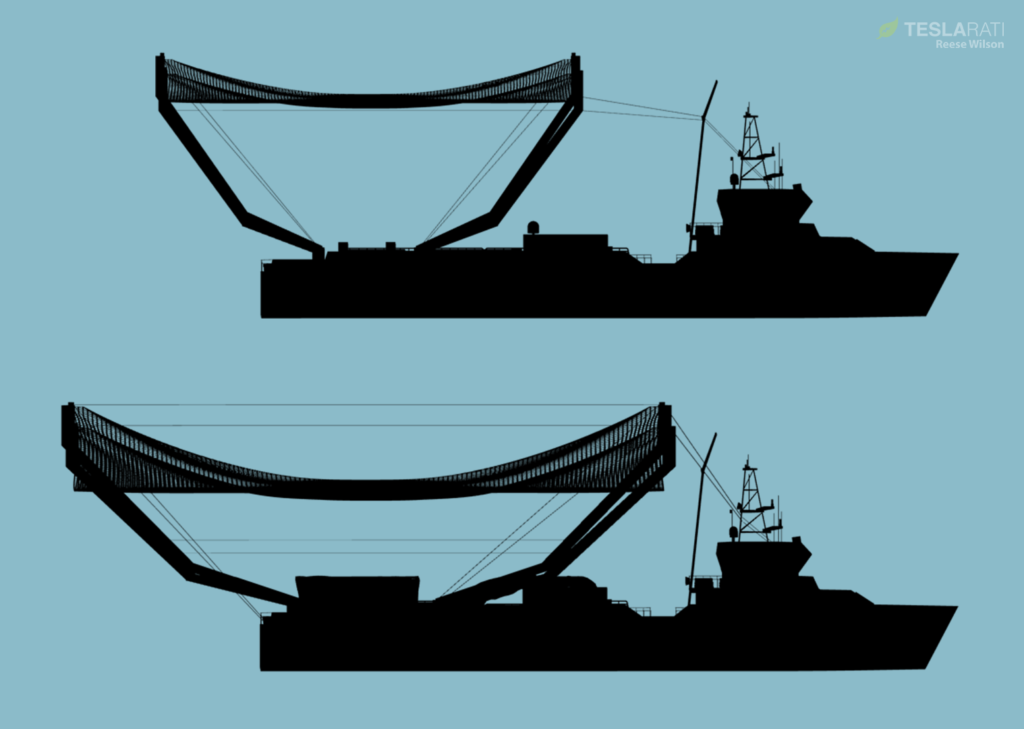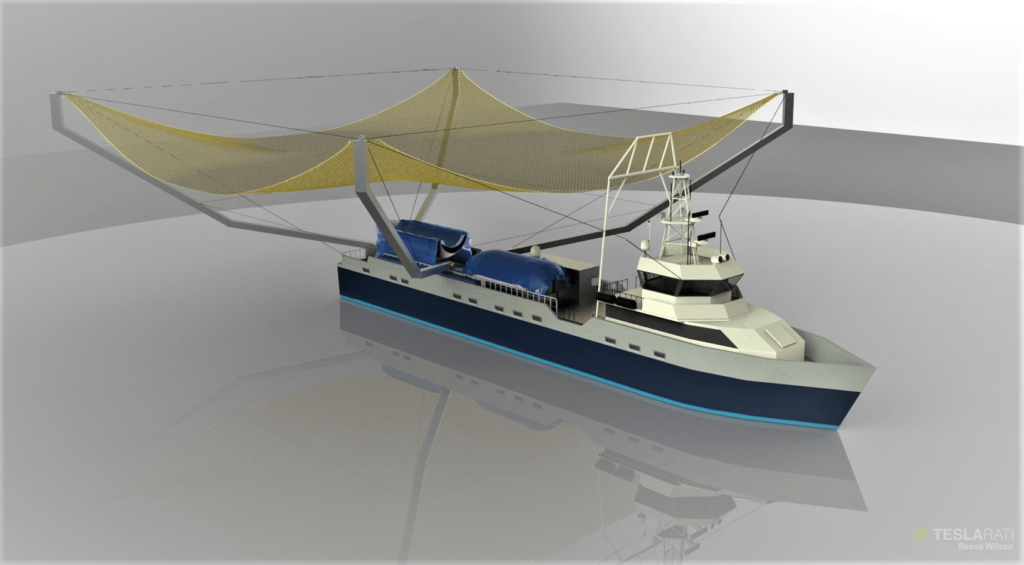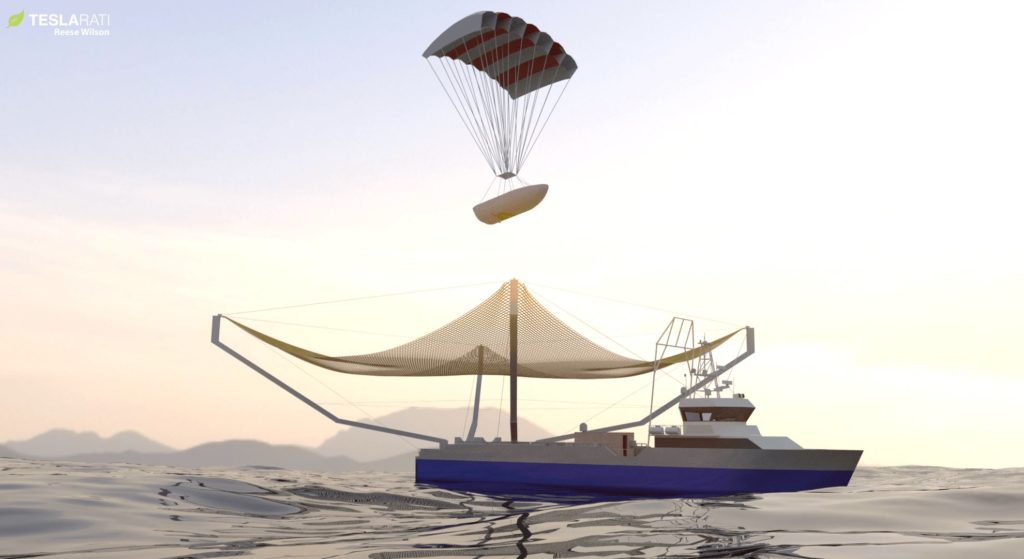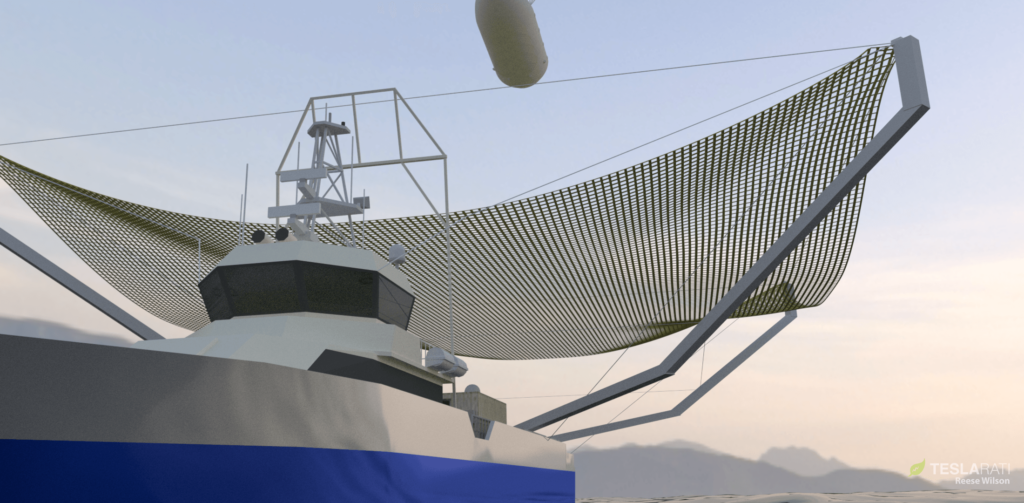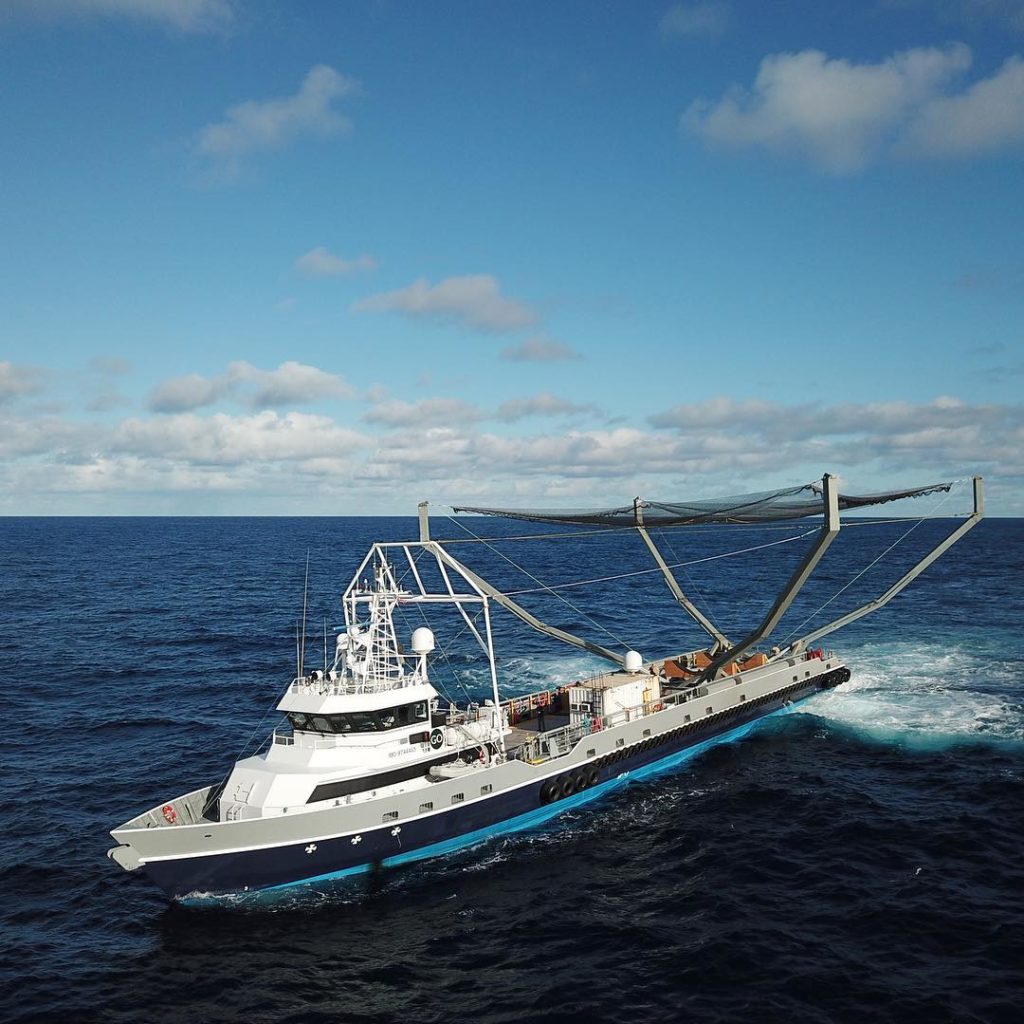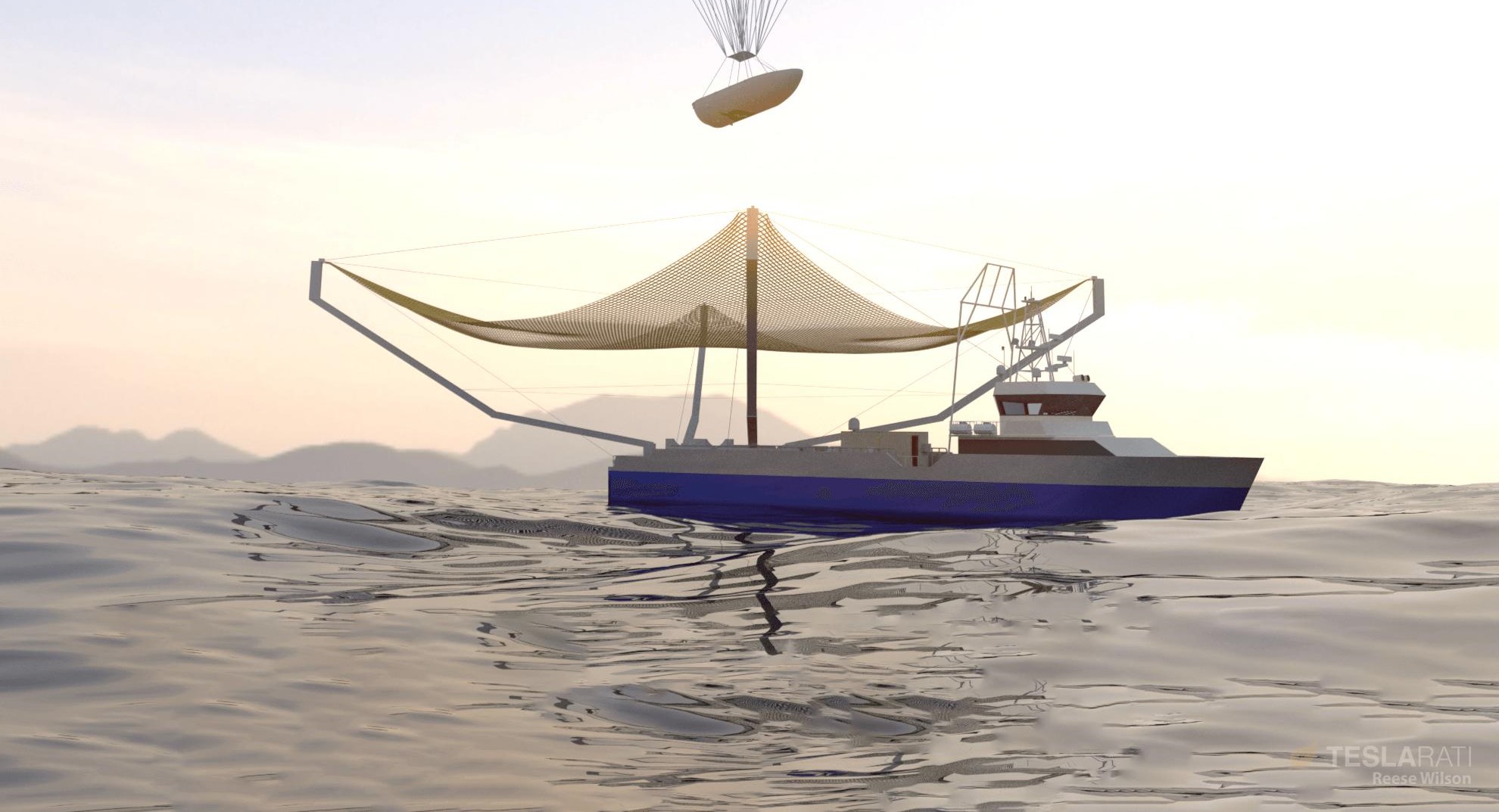
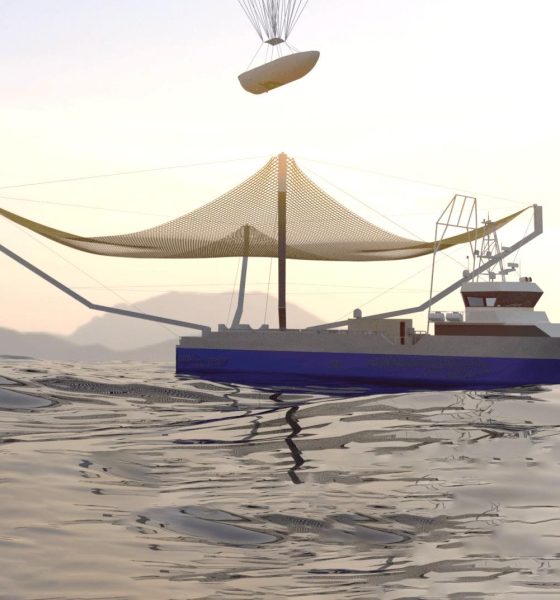
News
Renderings of SpaceX clawboat’s huge net upgrade is a taste of what’s to come
After several close-but-no-cigar attempts at snatching a Falcon 9 payload fairing out of the air, SpaceX’s iconic recovery vessel Mr Steven is currently laid up at the company’s newly-acquired Berth 240 dock space, roughly a week into the process of upgrading his arms to support a much larger net. CEO Elon Musk recently hinted that the boat’s net would be expanded by a factor of four, but what would such a dramatic growth look like?
To give a better idea of what to expect from Mr Steven’s arm and net upgrades, Teslarati’s Reese Wilson modeled and rendered the fairing recovery vessel with one such interpretation. The dimensions and aspect ratios may not be a mirror-image of the real-world Mr Steven, but the visual effect of the net upgrade is still fundamentally the same.
With respect to these renders, the actual net growth is somewhat less than the full fourfold area upgrade mentioned by Musk in early June – the concept art’s net is closer to 2.5 or 3 times larger than Mr Steven’s original net. This slight inaccuracy may actually be serendipitous, as a true 4X net could be downright unwieldy without the addition of some sort of complex retraction mechanism, versus the simple but functional (and infinitely reliable) implementation of fixed steel arms at the current net’s scale.
- A side-by-side comparison of Mr Steven before (top) and after (bottom) installation of a net with roughly 2.5X greater catching area. (Reese Wilson)
- Incredibly, this artist rendering of a much larger net installed on Mr Steven was perhaps two or more times smaller than the solution now installed on the vessel. (Reese Wilson)
Dramatic modifications nevertheless are all but guaranteed, as Mr Steven appears to have had the entire arm apparatus – including the steel base attaching them to his cargo deck – completely removed and placed on the side of the dock, still less permanent than the apparent decision to plasma or torch cut each arm off of that base, one of which is visible dockside at Berth 240. It may be possible to re-weld those severed arms onto the base, but it’s arguably more likely that entirely new arms, an entirely new base, or both will be fabricated, and those larger arms will themselves require a much larger net.
Ultimately, the fairing recovery vessel has gotten as close as 50 meters to gently catching a parasailing rocket fairing minutes after launch, an extraordinarily tiny error compared to the broader scope of the task at hand. Upon separation from Falcon 9’s upper stage, each payload fairing half is routinely traveling at speeds of 1.5 to 2 kilometers per second and reach apogees anywhere from 100 to 130 kilometers, all while traveling the better part of a thousand miles (800 mi/1300 km for Iridium-6) to reach Mr Steven’s net. As such, “missing” by 50 meters is an extraordinary achievement.
- A fairing floats gently into the welcoming embrace of Mr Steven’s upgrade net and arms. (Reese Wilson)
- With any luck, viewers may get a live view of the vessel’s next recovery attempts. (Reese Wilson)
- Mr Steven is currently undergoing arm surgery (upgrades) at SpaceX’s future BFR factory lot, known as Berth 240. (Elon Musk)
A fairing floats gently into the welcoming embrace of Mr Steven’s upgrade net and arms. (Reese Wilson)
With the vessel’s current net roughly 30 meters or 100 feet square (Mr Steven is 60m/200ft bow to stern), give or take 25%, a full fourfold upgrade would double each dimension, which could singlehandedly cut the error margin required for fairing recovery (currently 50 meters) by more than 50% if it remains square. If SpaceX finds a way to functionally achieve something close to a fourfold increase in area with a more rectangular aspect ratio (assuming that the fairing’s present error is more a matter of glideslope inaccuracy than properly pointing the half at Mr Steven), a rectangular net with a width ~50% and length ~300% larger – say 40 meters by 80 meters – would completely close the error gap between reliably missing and reliably catching Falcon fairings. To compare, a common football (soccer for our American readers) field is typically 70 meters by 100 meters.
Time will tell, and we’ll find out soon whether those arm and net upgrades can be available for SpaceX’s next California launch, currently scheduled on the morning of July 20th.

One half of SpaceX’s Iridium-6/GRACE-FO just moments before touchdown on the Pacific Ocean. (SpaceX)
Follow us for live updates, peeks behind the scenes, and photos from Teslarati’s East and West Coast photographers.
Teslarati – Instagram – Twitter
Tom Cross – Twitter
Pauline Acalin – Twitter
Eric Ralph – Twitter

News
Tesla’s new Holiday perk is timed perfectly to make FSD a household name
Tesla AI4 owners get FSD (Supervised) through Christmas, New Year’s Eve and well into the post-holiday travel season.
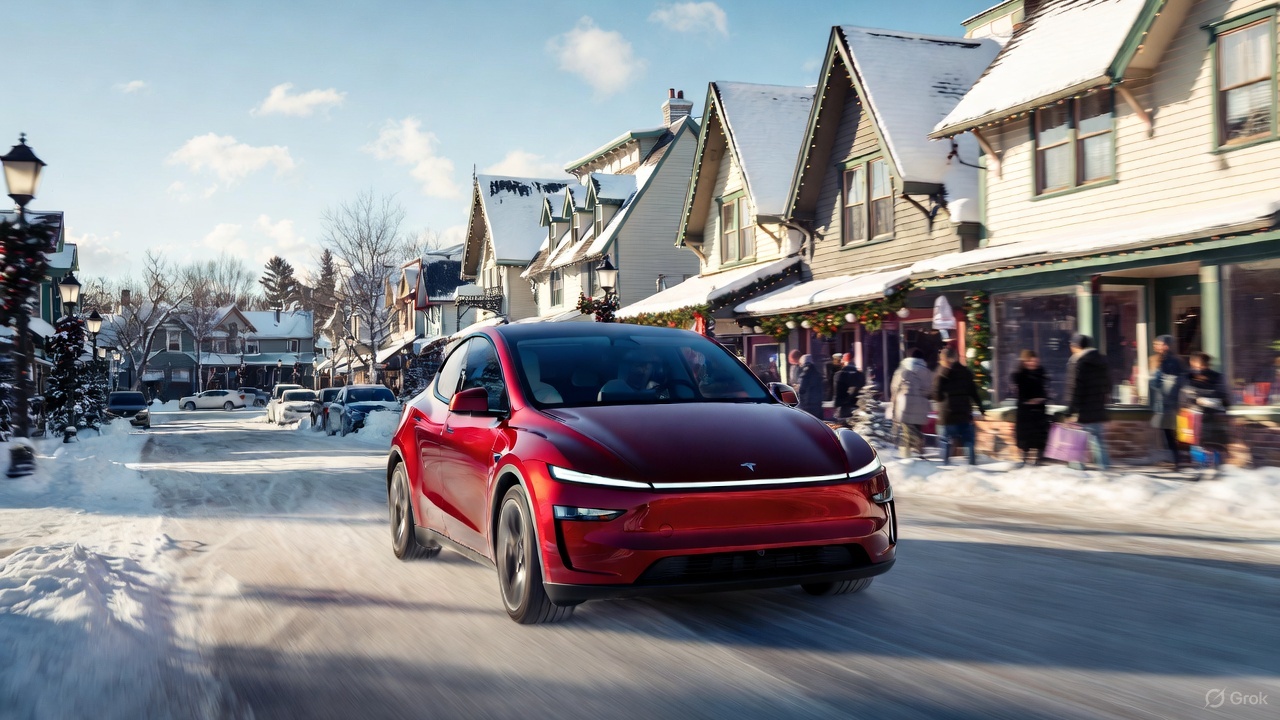
Tesla quietly rolled out a free Full Self-Driving (Supervised) trial for roughly 1.5 million HW4 owners in North America who never bought the package, and the timing could very well be genius.
As it turns out, the trial doesn’t end after 30 days. Instead, it expires January 8, 2026, meaning owners get FSD (Supervised) through Christmas, New Year’s Eve and well into the post-holiday travel season. This extended window positions the feature for maximum word-of-mouth exposure.
A clever holiday gift
Tesla watcher Sawyer Merritt first spotted the detail after multiple owners shared screenshots showing the trial expiring on January 8. He confirmed with affected users that none had active FSD subscriptions before the rollout. He also observed that Tesla never called the promotion a “30-day trial,” as the in-car message simply reads “You’re Getting FSD (Supervised) For the Holidays,” which technically runs until after the new year.
The roughly 40-day period covers peak family travel and gatherings, giving owners ample opportunity to showcase the latest FSD V14’s capabilities on highway trips, crowded parking lots and neighborhood drives. With relatives riding along, hands-off highway driving and automatic lane changes could become instant conversation starters.
Rave reviews for FSD V14 highlight demo potential
FSD has been receiving positive reviews from users as of late. Following the release of FSD v14.2.1, numerous owners praised the update for its smoothness and reliability. Tesla owner @LactoseLunatic called it a “huge leap forward from version 14.1.4,” praising extreme smoothness, snappy lane changes and assertive yet safe behavior that allows relaxed monitoring.
Another Tesla owner, @DevinOlsenn, drove 600 km without disengagements, noting his wife now defaults to FSD for daily use due to its refined feel. Sawyer Merritt also tested FSD V14.2.1 in snow on unplowed New Hampshire roads, and the system stayed extra cautious without hesitation. Longtime FSD tester Chuck Cook highlighted improved sign recognition in school zones, showing better dynamic awareness. These reports of fewer interventions and a more “sentient” drive could turn family passengers into advocates, fueling subscriptions come January.
Elon Musk
Elon Musk predicts AI and robotics could make work “optional” within 20 years
Speaking on entrepreneur Nikhil Kamath’s podcast, Musk predicted that machines will soon handle most forms of labor, leaving humans to work only if they choose to.
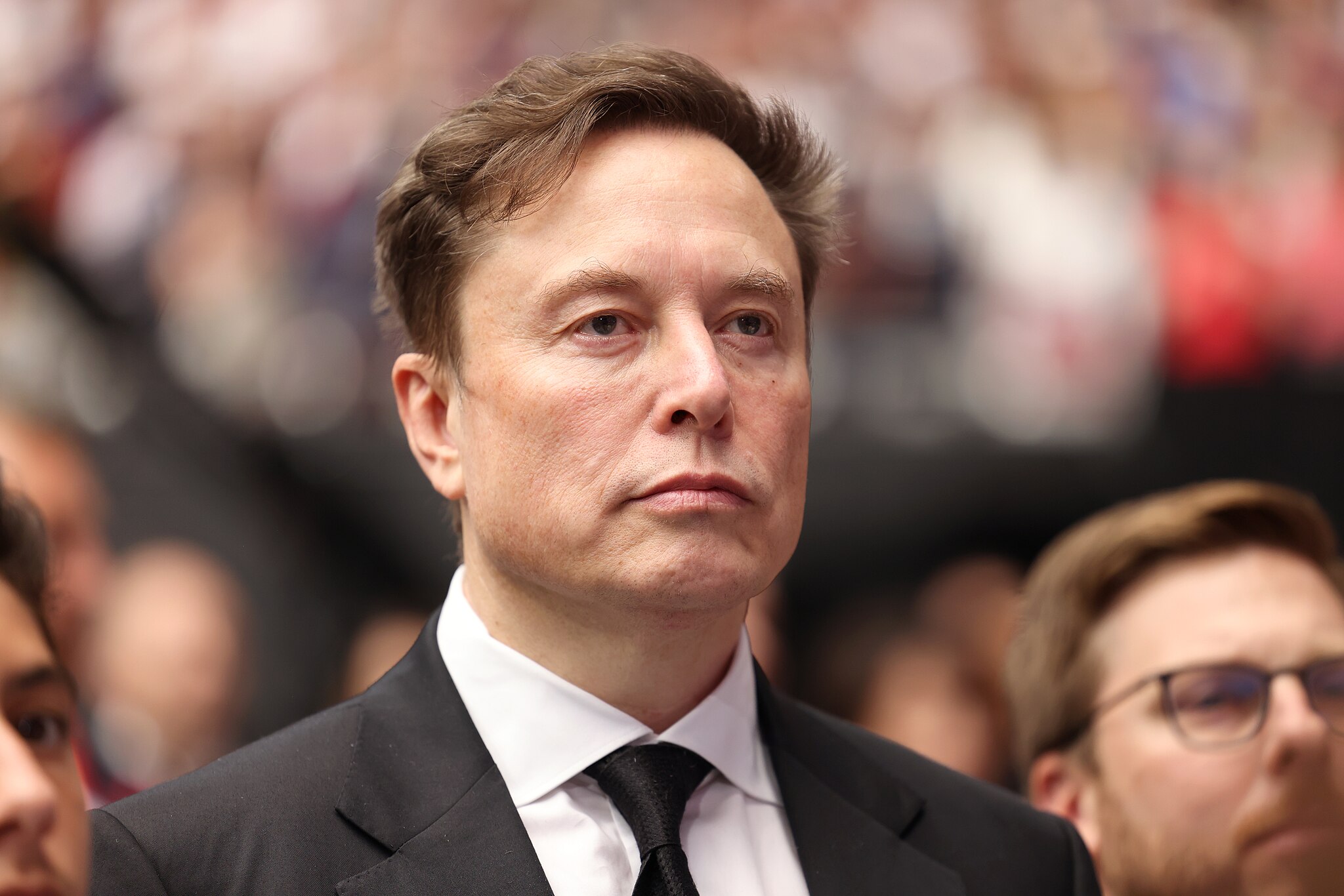
Elon Musk stated that rapid advances in artificial intelligence and robotics could make traditional work unnecessary within two decades.
Speaking on entrepreneur Nikhil Kamath’s podcast, Musk predicted that machines will soon handle most forms of labor, leaving humans to work only if they choose to.
Work as a “hobby”
During the discussion, Musk said the accelerating capability of AI systems and general-purpose robots will eventually cover all essential tasks, making human labor a choice rather than an economic requirement. “In less than 20 years, working will be optional. Working at all will be optional. Like a hobby,” Musk said.
When Kamath asked whether this future is driven by massive productivity growth, Musk agreed, noting that people will still be free to work if they enjoy the routine or the challenge. He compared future employment to home gardening, as it is something people can still do for personal satisfaction even if buying food from a store is far easier.
“Optional” work in the future
Elon Musk acknowledged the boldness of his claim and joked that people might look back in 20 years and say he was wrong. That being said, the CEO noted that such a scenario could even happen sooner than his prediction, at least if one were to consider the pace of the advancements in AI and robotics.
“Obviously people can play this back in 20 years and say, ‘Look, Elon made this ridiculous prediction and it’s not true,’ but I think it will turn out to be true, that in less than 20 years, maybe even as little as ten or 15 years, the advancements in AI and robotics will bring us to the point where working is optional,” Musk said.
Elon Musk’s comments echo his previous sentiments at Tesla’s 2025 Annual Shareholder Meeting, where he noted that Optimus could ultimately eliminate poverty. He also noted that robots like Optimus could eventually provide people worldwide with the best medical care.
Elon Musk
Elon Musk reiterates why Tesla will never make an electric motorcycle
Tesla CEO Elon Musk preemptively shut down speculations about a Tesla road bike once more.
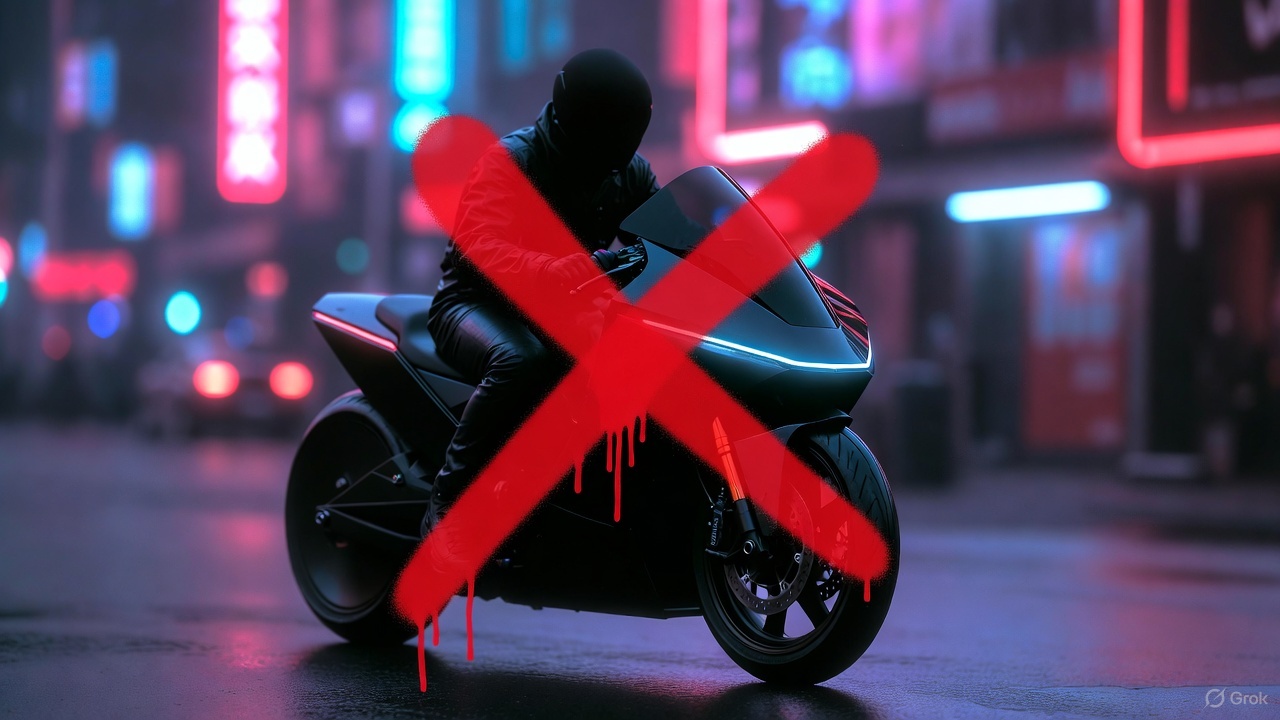
Tesla CEO Elon Musk preemptively shut down speculations about a Tesla road bike once more, highlighting that the electric vehicle maker has no plans to enter the electric motorcycle market.
Musk posted his clarification in a post on X.
Musk’s reply to a fun AI video
X user @Moandbhr posted an AI video featuring the Tesla CEO on the social media platform, captioning it with “Mr. Elon Musk Just Revealed the Game-Changing Tesla Motorcycle.” The short clip depicted Musk approaching a sleek, single-wheeled vehicle, stepping onto it, and gliding off into the distance amid cheers. The fun video received a lot of traction on X, gaining 3.1 million views as of writing.
Musk replied to the post, stating that a Tesla motorcycle is not going to happen. “Never happening, as we can’t make motorcycles safe. For Community Notes, my near death experience was on a road bike. Dirt bikes are safe if you ride carefully, as you can’t be smashed by a truck,” Musk wrote in his reply.
Musk’s Past Comments on Two-Wheelers
Musk also detailed his reservations about motorcycles in a December 2019 X post while responding to questions about Tesla’s potential ATV. At the time, he responded positively to an electric ATV, though he also opposed the idea of a Tesla road-going motorcycle. Musk did state that electric dirt bikes might be cool, since they do not operate in areas where large vehicles like Class 8 trucks are present.
“Electric dirt bikes would be cool too. We won’t do road bikes, as too dangerous. I was hit by a truck & almost died on one when I was 17,” Musk wrote in his post.
Considering Musk’s comments about dirt bikes, however, perhaps Tesla would eventually offer a road bike as a recreational vehicle. Such a two-wheeler would be a good fit for the Cybertruck, as well as future products like the Robovan, which could be converted into an RV.

